
Trains, buses and trucks are all vital to the modern world, but the vast majority of them use huge amounts of fuel and create tons of air pollution. What’s even worse is that they represent a (thus far) missed opportunity for making the world’s cities greener.
While buses reduce the need for cars, trains are capable of hauling huge amounts of goods, as are trucks, AND moving huge amounts of people. Imagine if we could convert all of these big vehicles to run on hydrogen, which is the most basic of all molecules.

Sadly, hydrogen hasn’t taken off as a fuel when it comes to cars and light vehicles, and that’s due to various logistical difficulties, such as the prohibitively expensive cost of creating a large filling station network, and difficulty actually getting the fuel into a car (hydrogen is volatile and needs to be contained properly).
Hydrogen has been used for a variety of purposes, both industrial and commercial, since the first time it was liquefied at the end of the 19th Century. During the 1920s and 30s, it was used in the enormous airships that used to criss-cross the Atlantic Ocean until the fateful Hindenburg disaster of 1937, which heralded the end of the airship era.
Hydrogen regained prominence as a commercial fuel in the early 1980s following the end of the energy crisis. It was also spurred on further by the rising greenhouse gas problem and climate change. After decades of collaborating and innovating, scientists managed to create the first commercially available hydrogen fuel cell back in 2007.
Think of a hydrogen fuel cell as a gigantic, chemically-powered battery that collects hydrogen atoms and strips them of their electrons. The ionized atoms carry a charge that’s collected and sent through negatively-charged wires to generate power. The cell burns water and nothing else, so the only by-product is odorless water vapor.
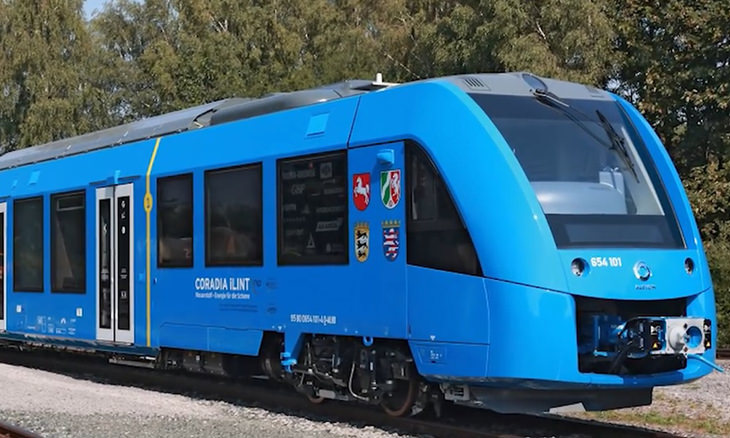
Many of the world’s advanced nations, namely Norway, Japan and Germany, are investing heavily in the technology in order to move away from their dependence on fossil fuels. The Norwegians, for instance, are going about implementing a new hydrogen-powered train network right now, saving $67 million a year in fuel in the process.
Germany is going even further. It will launch the world’s first hydrogen-powered commuter rail service in December 2017. The hydrogen-powered trains will be used on smaller interurban routes initially, however it’s the first step towards a cleaner, zero-emissions future.
Content and image source: The Plaid Zebra
 11:11
11:11
Discover Sommarøy: The Island Where Time Takes a Break
Sommarøy is an island where time takes a break...

Earth is a Gorgeous Place, and These 18 Photos Prove It
From the national parks in the United States, through the enchanting sights of the frozen north - these are the amazing gifts nature has to offer us.
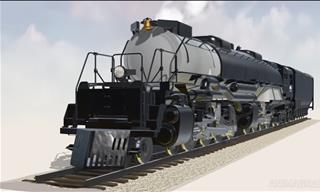 36:24
36:24
Ever Wonder How a Steel Locomotor Works?
Let’s take a closer look at the engineering behind these compact workhorses.

Wow: Some Things You Will Only Ever See in Japan!
In this post, you'll find 12 photos that show some of the "bizarre" and fascinating things one might see in the country of Japan.

Norway: Where Living is a Unique Adventure (13 Pics)
You may have seen Norway’s beauty, but today we will introduce you to the how weirdly wonderful life in the Nordic country is.

Japan's 9 Most Underrated Destinations You MUST Visit
Have you visited any of these underrated destinations in Japan?

24 Beautiful Vintage Cars That Make Me Pine for the Past
Who wouldn't love to ride these early motor cars?
 44:39
44:39
How the Spitfire Became the Most Iconic Plane to Ever Fly
This full documentary will tell you all you need to know about the plane that saved Britain from invasion and defeat during the Second World War.
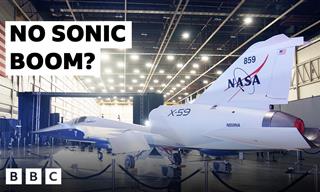 2:47
2:47
NASA’s X-59: Quiet Supersonic Flight is Coming Soon
Could this be the future of how we fly?
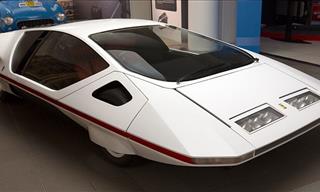
These Cars Were Designed By Some Truly Creative Geniuses!
There have been some truly strange cars seen on the road, but nothing beats these 10 cars designed by major companies to be unique
 20:30
20:30
The Forgotten Airships of the U.S. Military
This is the story of America's ambitious journey into the age of aerial warfare.

13 Rare Photos of Awesome Vintage Cars in Action
These images offer a rare look at some of the earliest moments of automotive racing.
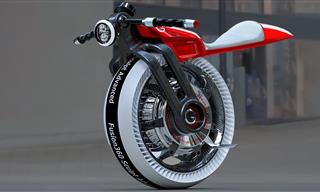 47:09
47:09
The Most Innovative New Bikes of 2025
Get ready to experience the most cutting-edge electric bikes, mind-blowing smart bike tech, and innovations that are totally transforming how we ride
 5:15
5:15
How Car Traffic Has Changed Over the Past Century
This unique video clip shows you the evolution of traffic in the USA over the past century using genuine footage from each decade, fascinating!
 10:15
10:15
Super Cool DIY Vehicles That Will Inspire the Rider in You
Meet some cool people who created their own dream rides after they were dissatisfied with the ones the had.

We Bet You've Never Seen Cars Stranger Than These
These cars are undoubtedly the strangest cars that you have ever seen.
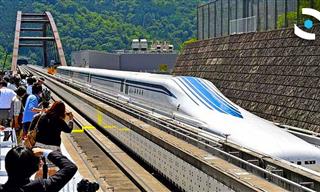 6:39
6:39
Traveling In This Train Will Be An Incredible Experience!
Japanese Maglev L0 has now become the world’s fastest bullet train. Let’s find out more about it.

Armored History: 10 Most Important Tanks of WWII
Tanks were a significant factor in most of the main fighting theatres in World War II. Here are 10 important models any history buff should know.

Iconic Trains That Reshaped the Course of History
Here is a look at some of the most important trains in history that went on to reshape the course of events in the world in their time.
 6:23
6:23
Fascinating! The Physics Behind Flights Explained!
This video gives you a bird's eye view into how our modern day flights came to be the incredible structures they are now.
 19:27
19:27
15 of the Most Unusual, Oddball Vehicles Ever Designed
Check out some of the most unusual and peculiar vehicles ever designed.

The Coolest Warplanes Ever Built—See the List!
Let’s take a look at some of the most fascinating, unconventional, and downright coolest military aircraft ever built.
 8:30
8:30
The Inflatable Airplane That Once Promised To Save Lives
The Goodyear Inflatoplane was a unique aircraft from the '50s that was designed as a rescue vehicle. Learn all about its story here.
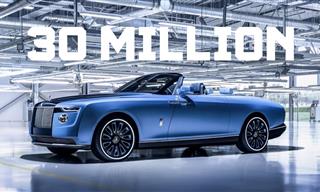 10:26
10:26
Top 10 Most Expensive Cars in the World
Let's have a look at the most expensive and luxurious cars in all of 2023.

You Are Going to Love These Weird and Wonderful Trucks
These weird, wacky, and wonderful trucks just define cool...
 19:01
19:01
15 Incredibly Small Vehicles You’ve Never Seen Before
It's hard to believe how ridiculously small these vehicles are. Take a look.

How Far Can You Drive with a Car's Fuel Warning Light On?
Sometimes we inevitably end up cutting it too fine when it comes to the amount of gas that we have in our car. Read this guide to learn how far you can go.

Exactly How Did These People Get Their Driving Licenses?
Sometimes people simply can't keep their cars on the road... As these absurd and hilarious driving fails pictures show.
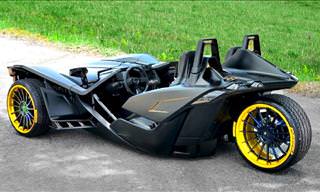 10:27
10:27
Unbelievable and Unknown Vehicles That'll Blow Your Mind
You will be absolutely blown away by these 10 insanely cool new types of vehicles that have been developed.
 11:30
11:30
Extreme Vehicles That Will Impress You
If you like to follow up with technological advancements, you'll love watching these extreme vehicles persevere even in the worst weather conditions!
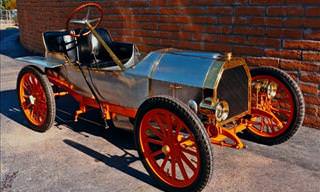
Bugatti Has Certainly Had a Long and Checkered History...
Bugatti certainly has a long and checkered history, and cars produced by the original manufacturer are highly coveted. This is a concise history of Bugatti.
 20:05
20:05
20 Mini Airplanes You Won’t Believe Actually Fly!
These mini planes may be small, but they pack a serious punch!

You Won’t Find Cars Like These At Any Old Car Lot!
These car designs are as impressive as they are crazy and absolutely over-the-top...
 10:04
10:04
Insanely Cool Modern Vehicles That You Need To See Now
Take a look at these insanely advanced and futuristic-looking vehicles that are set to make our lives easier in the future.

Collection: The Airplanes That Conquered the Skies
Before you are 10 posts that will each take you to a world of airplanes, so you get a wide range of fascinating planes to learn about!
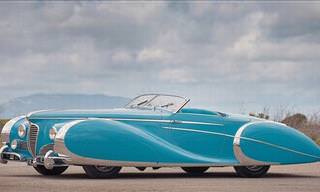
These 12 Beautiful Cars Are Literally One of a Kind
There are only one each of these beautiful, classic cars.

Would You Like to Drive Any of These Weird Cars?
Here are some of the most oddball cars you will ever see on the roads.
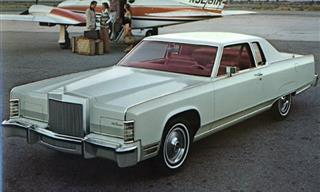
The '70s Ford Model We All Know and Miss
All about Ford's Lincoln Continental Mark V car from the '70s.

WWI Had Some Seriously Cool Motorbikes (12 Pics)
Here’s a fascinating look at some awesome bikes which appeared in World War 1.

We Need These 16 Classic Cars Back on the Road!
These classic cars were so cool!
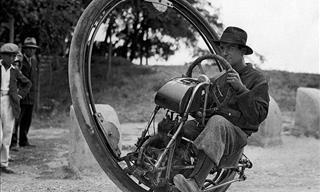
13 Unusual Vintage Vehicles You’ve Probably Never Seen
Take a look at this collection of classic pictures showing the weirdest and coolest vintage vehicles from history.

Discover the Delights of the Darjeeling Line In India
The intrepid explorer, Mark Twain, took this train journey on his travels through Asia during the late 19th Century. Come and explore this enchanting railway.
 11:23
11:23
The Eighth Wonder: How the Panama Canal Works
The Panama Canal is an engineering wonder, see how it was built and how it works here

You Won’t Believe How Massive These Steam Locomotives Were
Here we present some of the largest steam locomotives ever built throughout railway history.
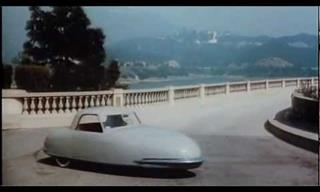 2:35
2:35
These Amazing Futuristic Cars Were Imagined In The ‘40s
This short video, which was released way back in 1948, showcases some really cool futuristic cars that look advanced even for today.
 24:45
24:45
Russia's Battle Train: An Old Idea Turned Modern
In a startling tactical shift, Russia has deployed armored trains to shield its southern supply lines from relentless Ukrainian drone attacks.
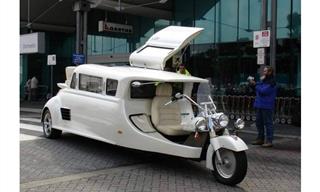
16 Wacky Cars That’ll Make You Do a Double Take
Take a look at these bizarre and wacky cars...
To enable your Ad-Free Subscription, please fill the fields below
Your subscription was successful, now you can enjoy an ad-free experience!! Note: To make sure you get no ads, please make sure to log in to your account. If you are logged in already, then refresh the page. The subscription can be cancelled at any time.


